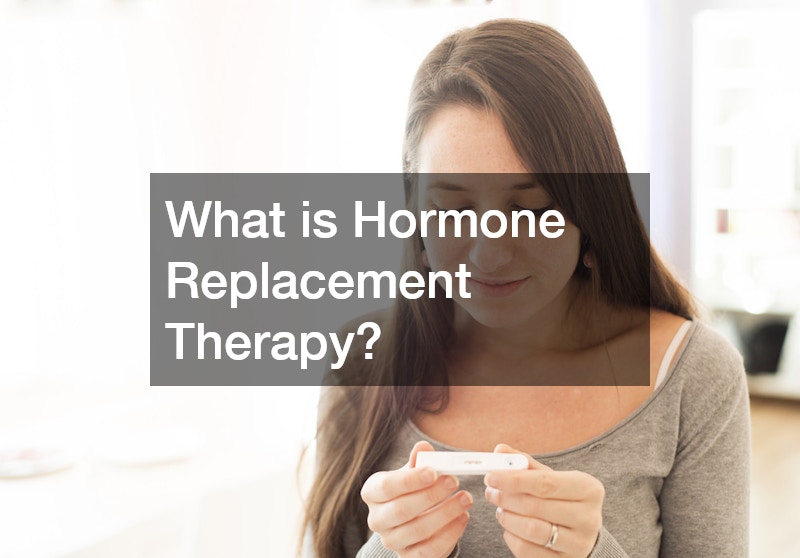
Hormone Replacement Therapy (HRT) has emerged as a practical option for women experiencing hormonal imbalances, especially during significant life stages such as pregnancy or menopause. In this article, we’ll explore when and why you should consider hormone replacement therapy, enabling you to make informed decisions about your wellness journey.
Hormones play a crucial role in numerous bodily functions, and fluctuations in their levels can lead to a range of symptoms that impact daily life. They can be to blame for anything from mood swings and fatigue to weight gain. Using female hormone supplements can help women alleviate distressing symptoms and restore a sense of normalcy in their lives. However, understanding when to seek treatment and which hormone supplements are right for you can be difficult to determine.
Consulting a hormone replacement therapy specialist becomes invaluable when you need help taming your hormones. These healthcare professionals are educated in the complexities of hormone therapy and can guide you in identifying the best supplements to take that are tailored to your individual needs. When considering hormone replacement therapy (HRT) for managing menopause symptoms or exploring the relationship between hormone therapy and weight loss, it is essential to take the right type of replacement to ensure you will improve your overall health and quality of life.
Modern health takes many different forms, and women in their late 40s or their 50s may take an interest in visiting anti aging clinics to get anti aging treatments done, such as bioidentical hormone therapy. In fact, bioidentical hormone therapy, or bioidentical hormone replacement therapy (BHRT) and traditional anti aging treatments may help nullify or reverse many of the symptoms of menopause in women, and thus bioidentical hormone therapy proves popular today. Of course, any woman interested in this is urged to visit her doctor first and ensure that bioidentical hormone therapy is a safe option for her. What is there to know about menopause and menopause solutions? And what about fertility solutions for younger women?
On Menopause
There might be a few misconceptions about menopause. It may first be noted that “menopause” it self is a very short phase of a woman’s life, often lasting just one or two days when her hormones greatly change. All of her life after that is her postmenopausal phase, and the few years leading up to menopause are known as perimenopause. When a women is in her mid to late 40s, she might expect to undergo perimenopause, which may hast four before menopause itself, and her hormones may change during this time. Her menstrual cycle will become irregular, too. Today, the mean age for menopause is 51, though in some rare cases a woman may undergo menopause in her 30s, or as late as her early 60s. Most often, women will experience it between ages 40 and 58.
In general, women do not like the effects of menopause or perimenopause. The hormonal changes alter a woman’s behavior and physical health, which may include not only a loss of fertility, but also mood swings, trouble with sleep, a much lower sex drive (or even pain during sex), hot flashes, memory trouble, and more. Therefore, many women seek out hormonal replacement methods at their local clinics, such as bioidentical hormone therapy.
Bioidentical hormone therapy, in contrast with traditional methods, uses organic hormones found in plants and horses, and its supporters cite how bioidentical hormone therapy uses natural ingredients. After all, the hormones extracted from animals and plants are the same as those in the human body, hence the name. In any case, a woman should first visit her doctor and/or her gynecologist and explain her interest in hormone replacement therapy, and if she is cleared for that, she may visit a clinic to get started. This often involves injections of estrogen into the body, and this may reduce or eliminate many symptoms of menopause.
This is largely harmless, though women should take note that this added estrogen to the body increases the chances of breast cancer development. For this reason, any women undergoing bioidentical hormone therapy or traditional hormone replacement should visit clinics regularly for mammography work to ensure that she is not developing cancer. Finally, it may be noted that performing hormone replacement within perimenopause or very early in the post menopause phase is ideal, since performing this hormone therapy too late has very little effect. Sooner is better, and a woman experiencing perimenopause may take initiative early and consult her doctor.
Fertility Solutions
Women of a reproductive age may find unexpected trouble getting pregnant or carrying a pregnancy to term, so they may visit fertility clinics to undergo exams and tests to get a diagnosis. Some lifestyle habits may harm a woman’s fertility, such as use of tobacco and the use of drugs. Even ongoing stress may lower a woman’s fertility, such as financial hardship, according to studies. Exams at the clinic may reveal other problems, such as the woman’s ovaries failing to release an oocyte (egg cell), and thus pregnancy is impossible. In other cases, a zygote might accidentally implant itself on a fallopian tube rather than the uterine lining to form a placenta, and that will greatly jeopardize a pregnancy.
Solutions may include surgery, medication, a change in lifestyle, or even in vitro fertilization or using a surrogate mother. A woman’s oocyte may be fertilized in a test tube with her male partner’s sperm, and this zygote can then be either implanted in the mother’s body or in that of a surrogate mother, if need be.


